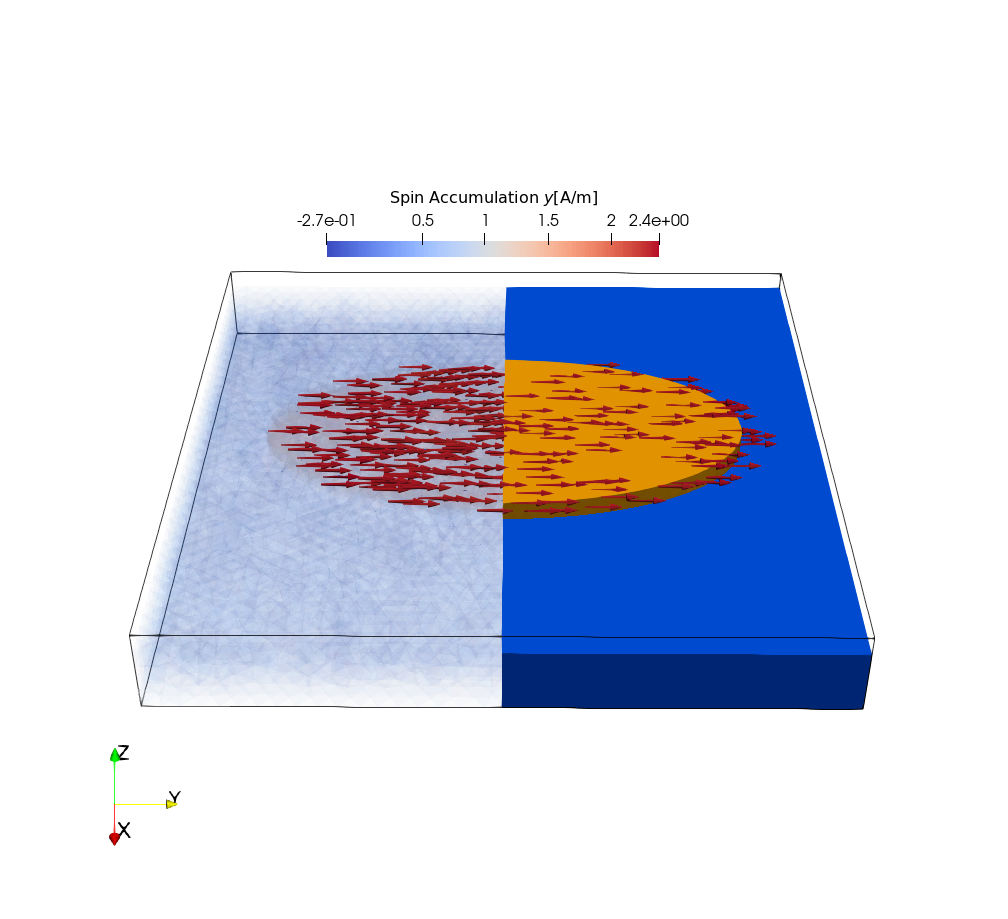 |
|
||||
BiographyNils Petter Jørstad was born in Warsaw, Poland, in 1995. He received his Bachelor’s degree in Physics at the Norwegian University of Science and Technology (NTNU), Norway, in 2019. After a summer internship at Manipal University in Jaipur, India, he enrolled in the Master’s program in Physics at NTNU. He obtained his Master’s degree in 2021, specializing in computational physics. Nils joined the Institute for Microelectronics in September 2021, where he is pursuing a PhD degree focusing on the implementation of spin and magnetization dynamics in simulations of non-volatile magnetic memory devices. |
|||||
Modeling Spin-Orbit Effects in Magnetoresistive Devices
Spin-orbit torque magnetoresistive random-access memory (SOT-MRAM) is a promising candidate to replace existing embedded memories: It is non-volatile, while also providing fast operating speeds and high endurance. The logical state of an SOT-MRAM cell is stored in the relative orientation between the magnetization of two ferromagnetic (FM) layers, separated by an insulator. The state is read using the tunnel magnetoresitance and is switched by reversing the orientation direction of one of the layers with an injected spin-current which is generated through spin-orbit coupling (SOC) in the bulk and at the interface of an adjacent heavy metal (HM) layer.
Spin-orbit coupling (SOC) is a relativistic interaction between the spin angular momentum of an electron and its orbital angular momentum around the atomic nucleus. Novel spintronic devices, such as SOT-MRAM, take advantage of this interaction to generate spin-polarized currents and to manipulate the magnetic moments in magnetic layers. Several effects originate from the SOC and they must be accurately modeled in order to provide predictive simulations of the operation of these devices.
To be able to realistically simulate the magnetization dynamics in SOT-MRAM cells, we solve the Landau–Lifshitz–Gilbert equation using the finite element method (FEM). Three effects, originating from the SOC, with important implications on the operation of SOT-MRAM have been implemented in the solver. This provides us with a computational tool for studying the impact of each effect on the performance of these devices.
The spin Hall effect (SHE) is a phenomenon which occurs in materials with a strong SOC, whereby transverse spin currents are generated in response to an applied electric field. The SHE is caused by spin dependent scattering of charge carriers in the bulk, which leads to a buildup of spin accumulation along the edges of the material (see Fig. 1).
The Rashba-Edelstein effect (REE) is another charge-to-spin conversion mechanism, similar to the SHE, which occurs in two-dimensional (2D) materials and at interfaces between materials with a large SOC. At these interfaces, the spin degeneracy of the energy bands is lifted, resulting in the generation of spin accumulation, when an electric field is applied (see Fig. 2).
The Dzyaloshinskii–Moriya interaction (DMI) is a contribution to the total exchange interaction between neighboring magnetic spins, which favors canting of the spins, in contrast to a parallel orientation, favored by the exchange interaction. The DMI has important consequences for the behavior of magnetic systems and can give rise to magnetic configurations with chiral properties such as skyrmions which have potential applications in spintronics (see Fig. 3).

Fig. 1: Simulation of the SHE in a HM wire.

Fig. 2: Simulation of the REE at a HM/FM interface.

Fig. 3: Simulation of a DMI skyrmion forming on a 160 nm diameter FM disk.


